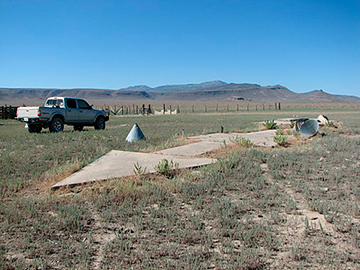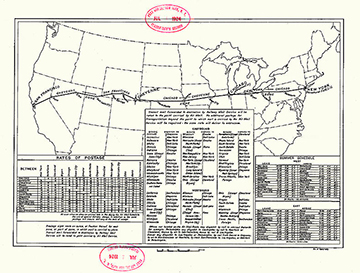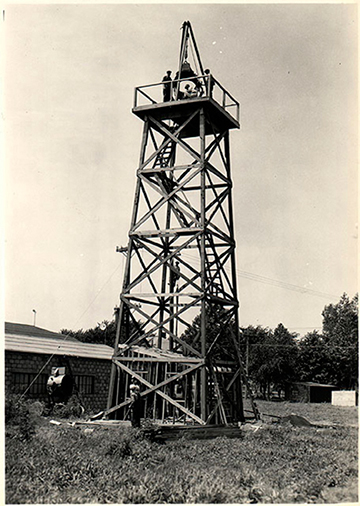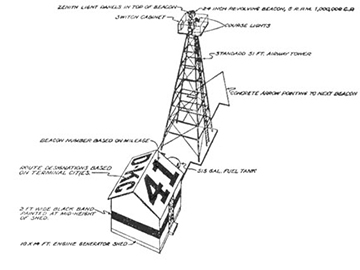Usually, it’s an “X” that marks the spot …
So what would you think if you ran across one of these big ol’ arrows?

Courtesy of Craig; AAIR, Aviation Archaeological Investigation and Research;
http://www.aviationarchaeology.com
Perhaps a large-scale geocaching symbol?
Wacky art piece?
Landing beacon for aliens?
Or a treasure hunt for the giants of Jack and the Beanstalk …
Actually, the last one isn’t far off.
These arrows were, in fact, a treasure map of sorts.
Though ixnay on the giants-ay … think aeronautics instead.
The treasure?
U.S. mail.
Prior to 1924, mail could take upwards of a month to arrive at its destination. The Pony Express, which solely delivered mail, was disbanded in 1861 as the Transcontinental Railroad took up the yoke and continued to improve the speed of mail delivery.
The railroad was completed from sea to shining sea in 1869, and until 1903, was the main means of mail delivery. That is, until the Wright Brothers completed their first successful flight and initiated the age of air travel.

U.S. Post Office Department map of the First Transcontinental Air Mail Route involving both day and night flying over the entire route opened July 1, 1924. Courtesy of Wikimedia Commons; PD-USGOV.
The Transcontinental Air Mail Route was 2,629-miles long, stretching between San Francisco, California, to New York, New York.
Needing no roads, train tracks, or animals, the advancement of air travel had just one hurdle to overcome: night.
Without high-tech navigation systems, a pilot could only fly during the day.
The solution?
Like breadcrumbs for a pilot, a series of beacons was built and lit—one every 10 miles.
Here is one of those “breadcrumbs,” a 51-foot steel tower.

Revolving light beacon towner being built, Omaha, 1920s. Courtesy of Postal Museum.http://www.postalmuseum.si.edu/museum/1d_Airmail_Beacon.html
Below is a drawing of the structure. Each was lit by a million-candlepower rotating beacon. As long as pilots could see the concrete “yellow brick road,” they could fly by night.

Airway beacon. Courtesy of Wikimedia Commons; U.S. DOT FAA
This allowed mail to cross the country in 30 hours or so, depending on conditions.
As fast as technology grows, the beacons were rendered obsolete by the ’40s. Most of the towers were torn down and the steel was used for the war effort, but hundreds of the yellow arrows remain.
The Western New Mexico Aviation Heritage Museum is in the process of restoring an airway beacon tower and its electric generator for visitors. More on that here.





















































What a unique piece of history. My son is a jet mechanic and I can’t wit to share this with him. (though he probably already knows all about this!)
Very interesting! I had no idea that anything like this existed in the first place, let alone, is still around. How cool! If I were to come upon one of these yellow arrows, I would never guess what it’s original purpose was. Thank you for sharing!
Cool. There are some beacon sites on the National Forest where I work, but no arrows. Tangles of steel cables on mountain tops are all that’s left. The ingenuity of people back in “low-tech” days never fails to amaze me, and I feel that something has been lost…